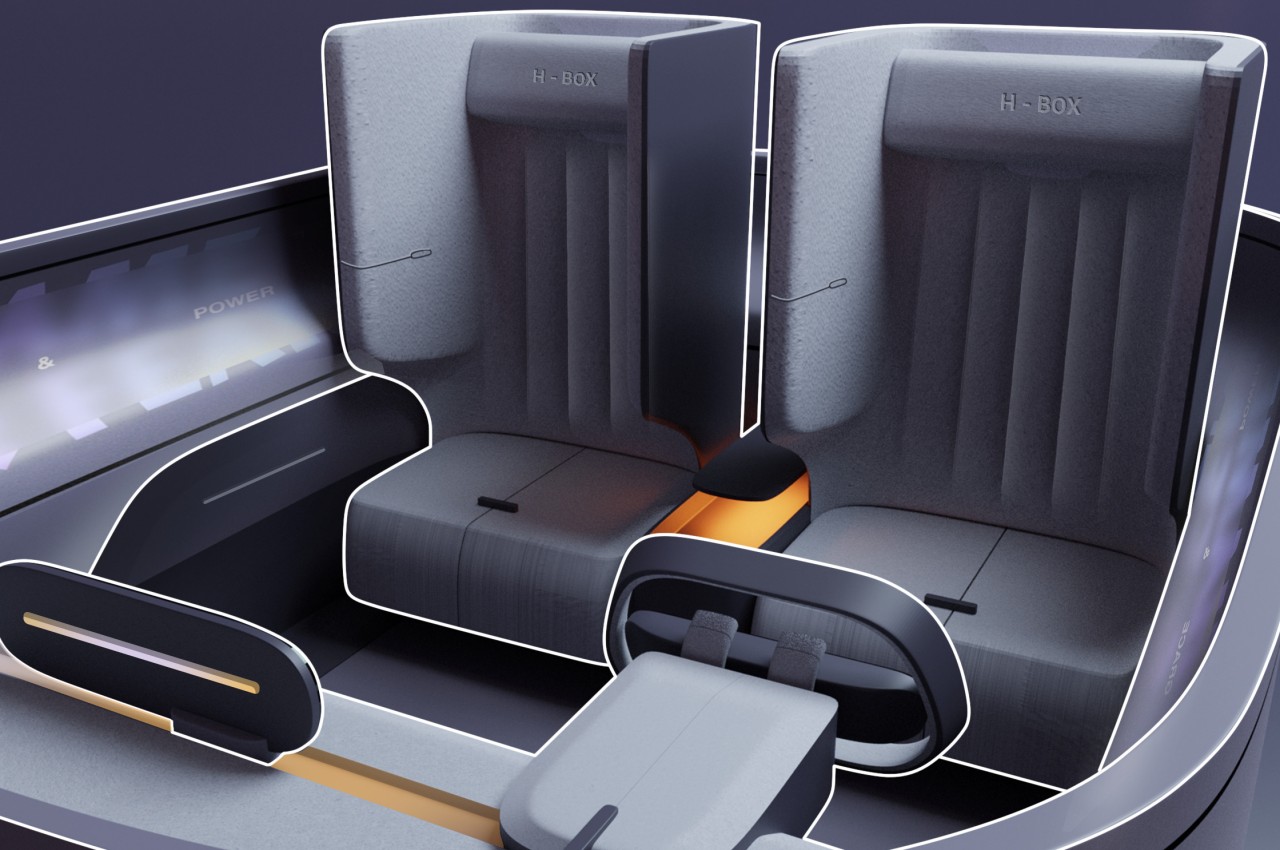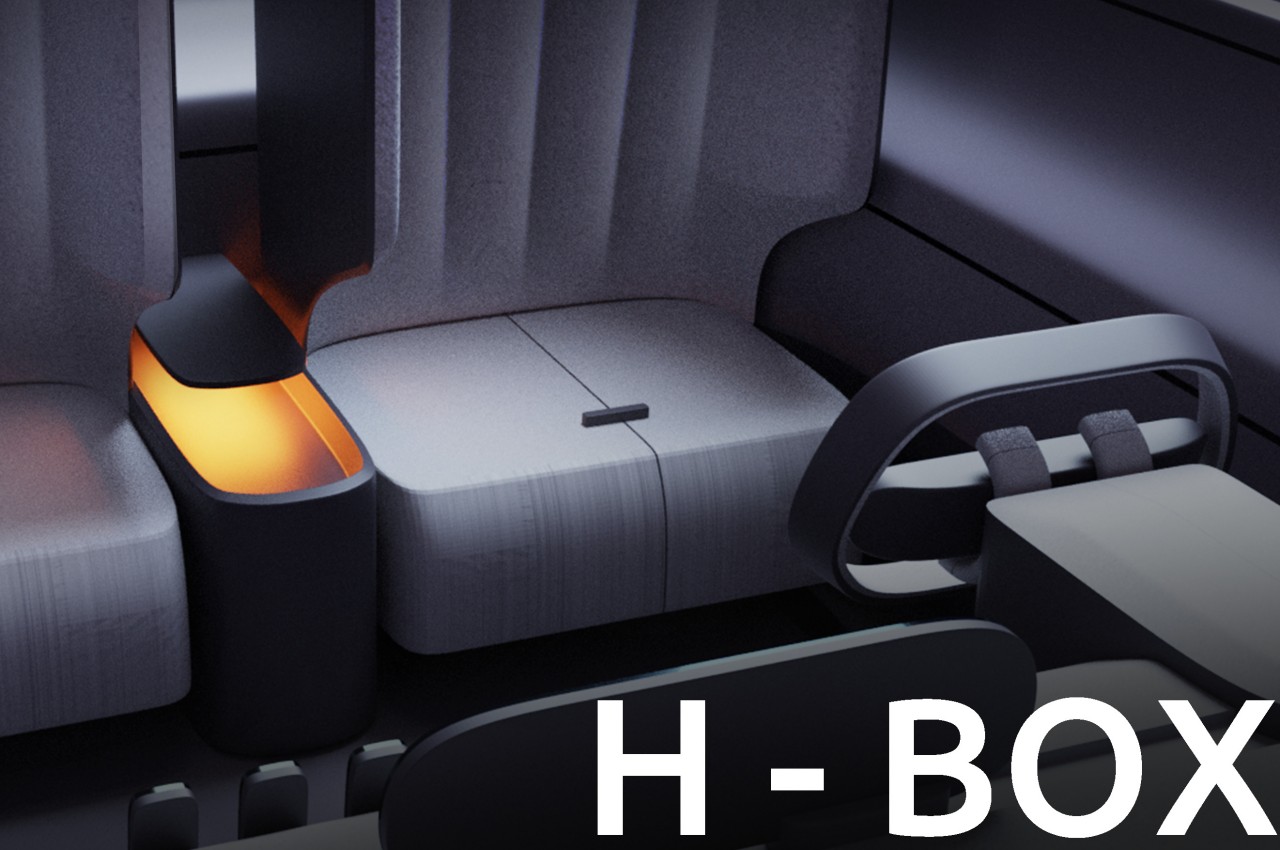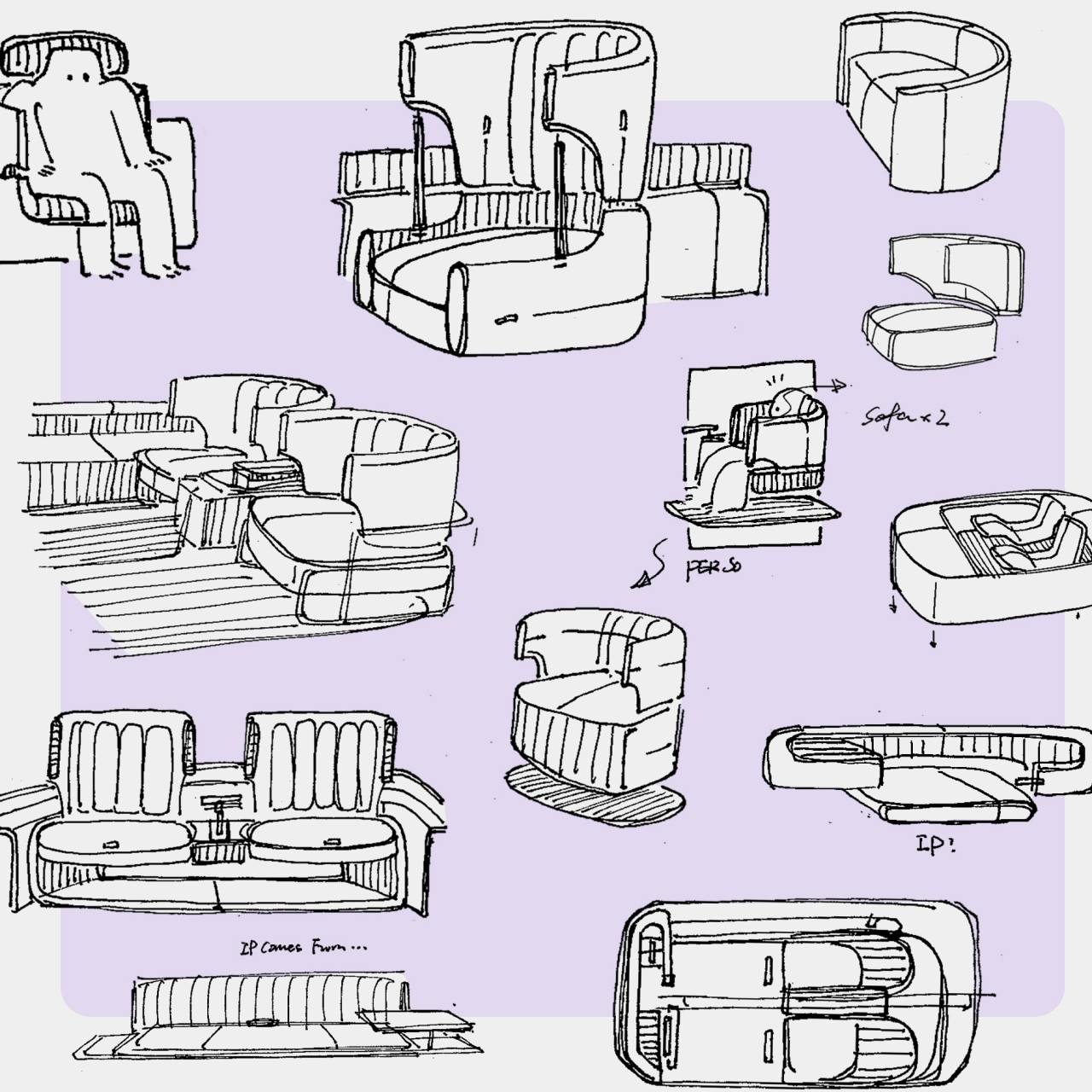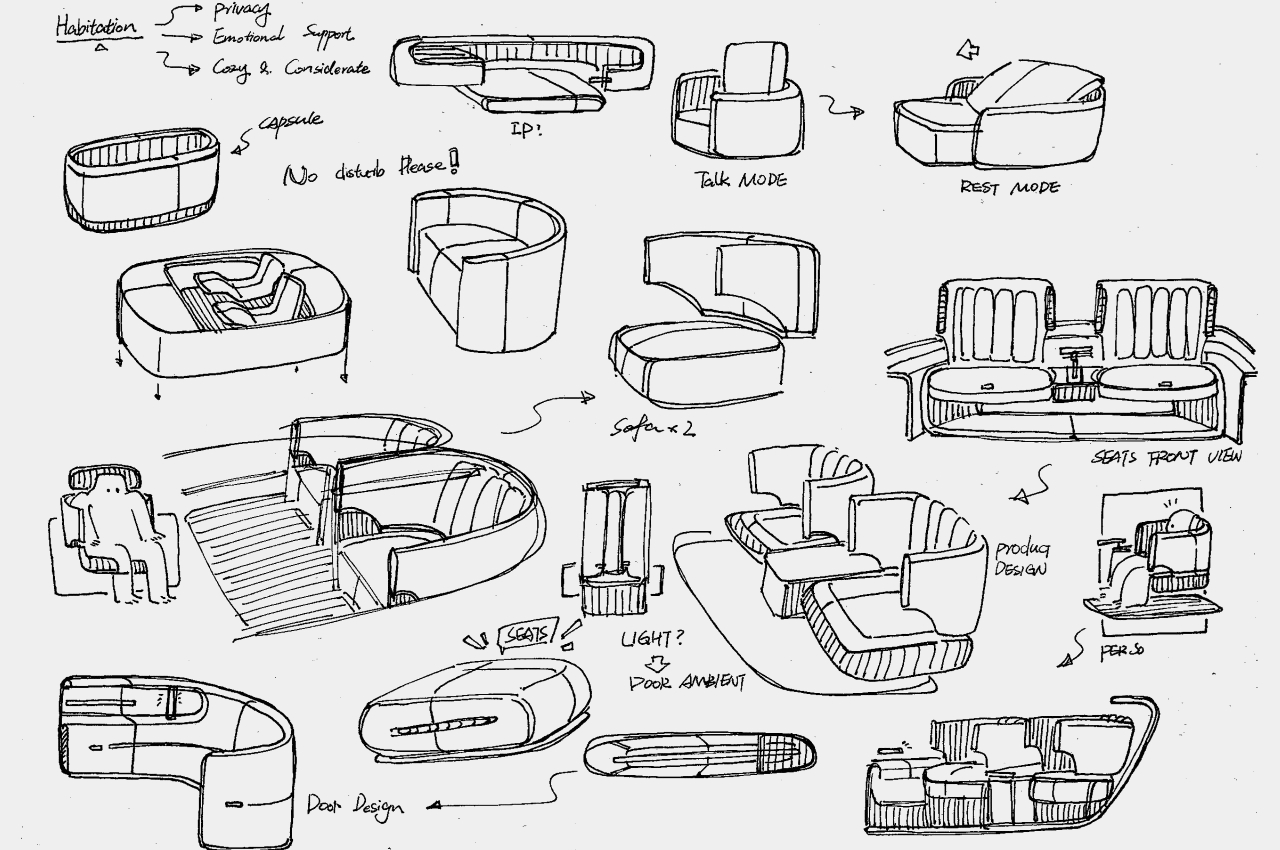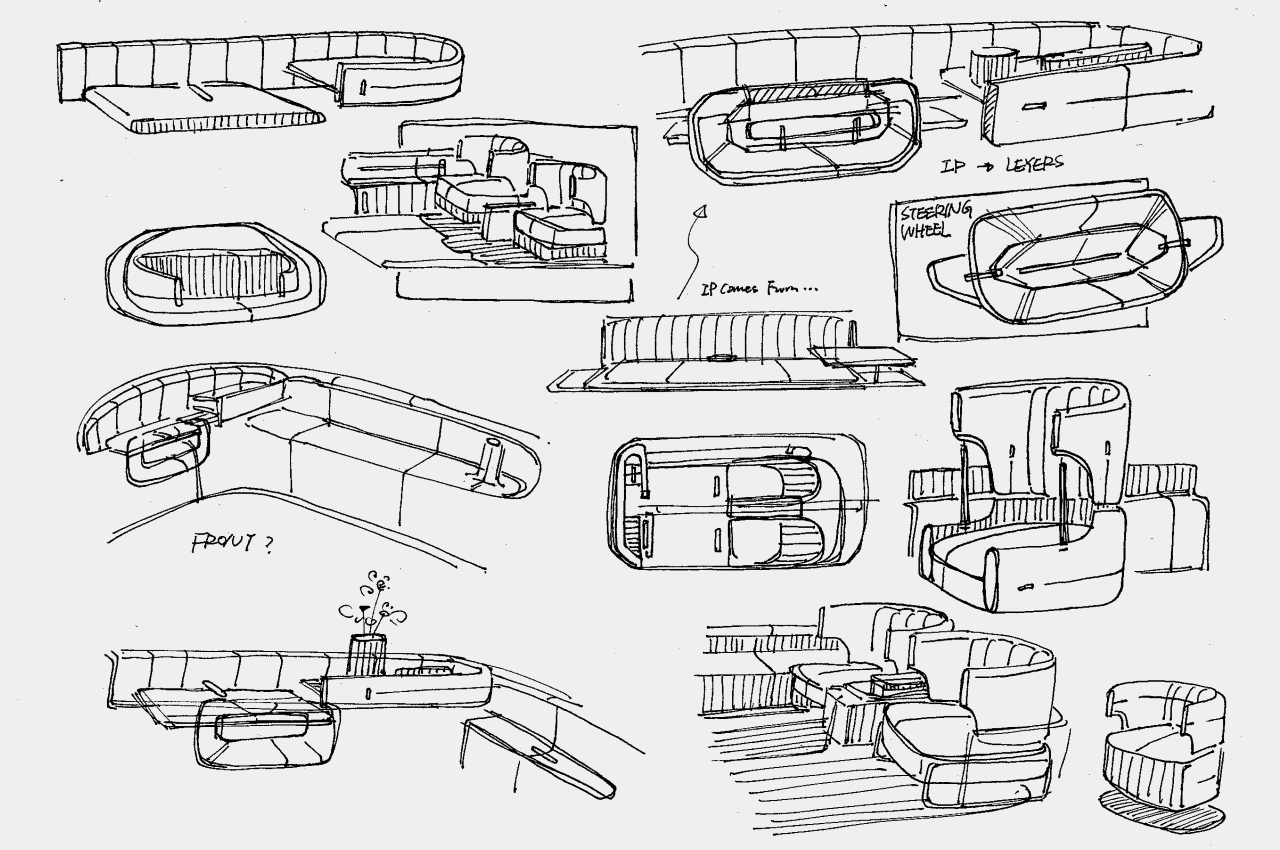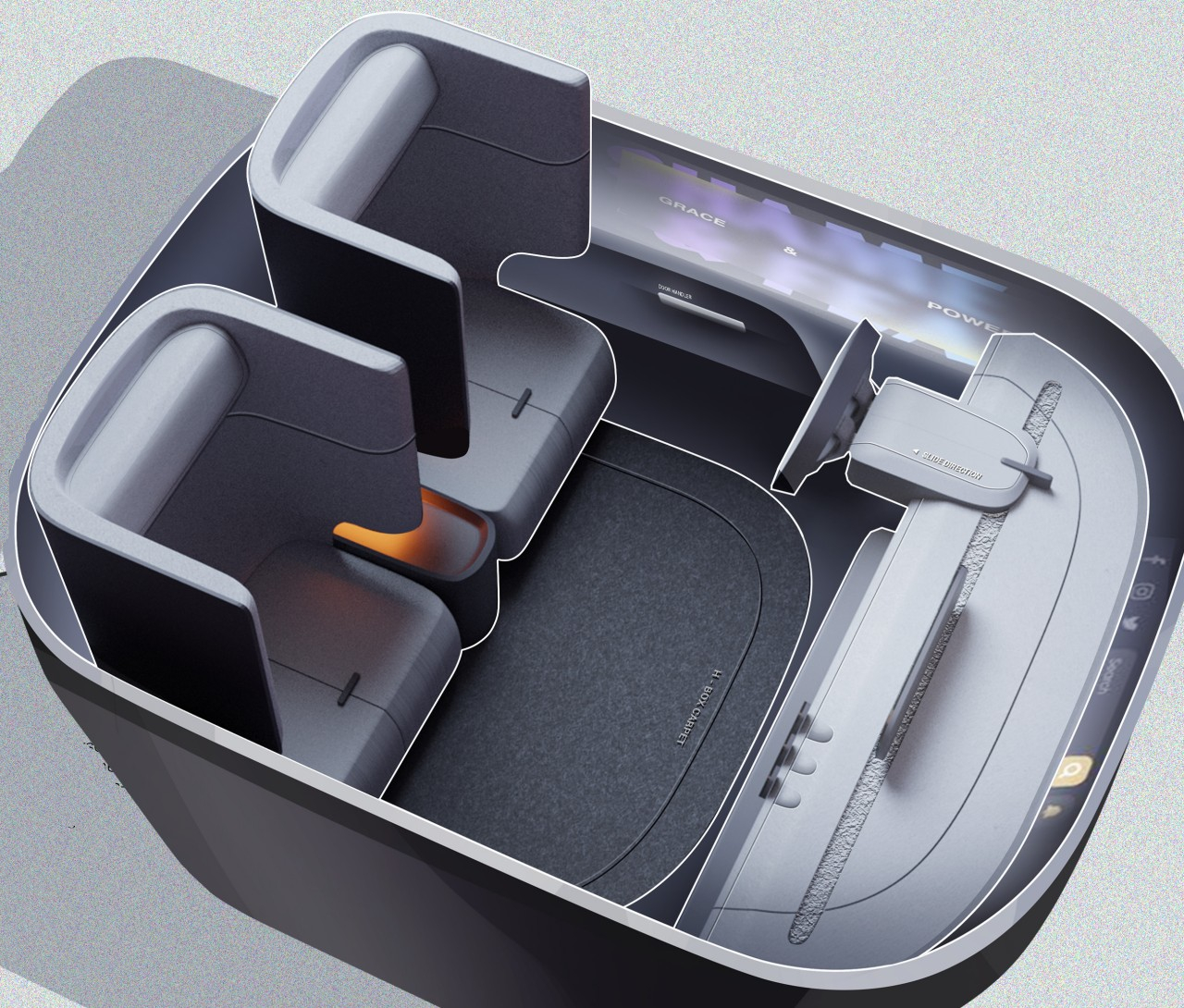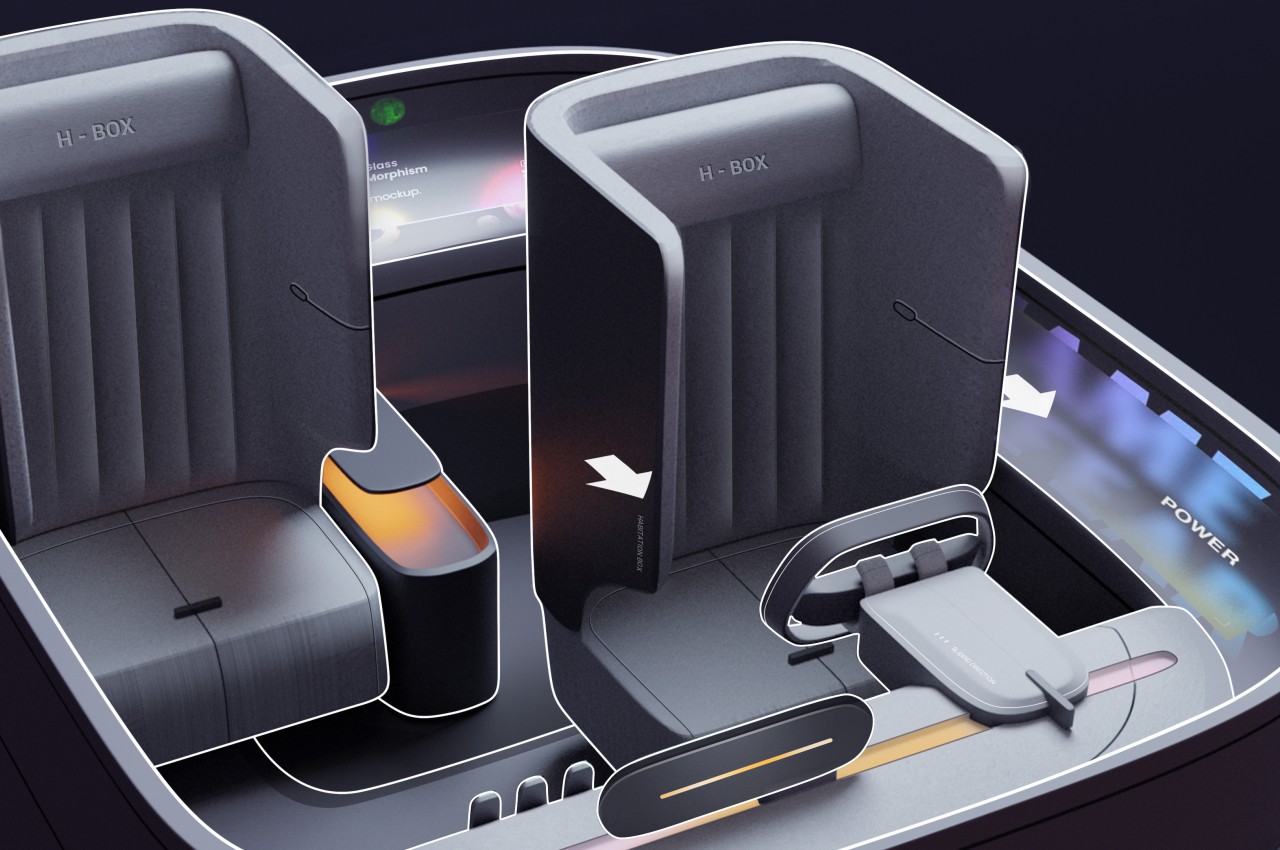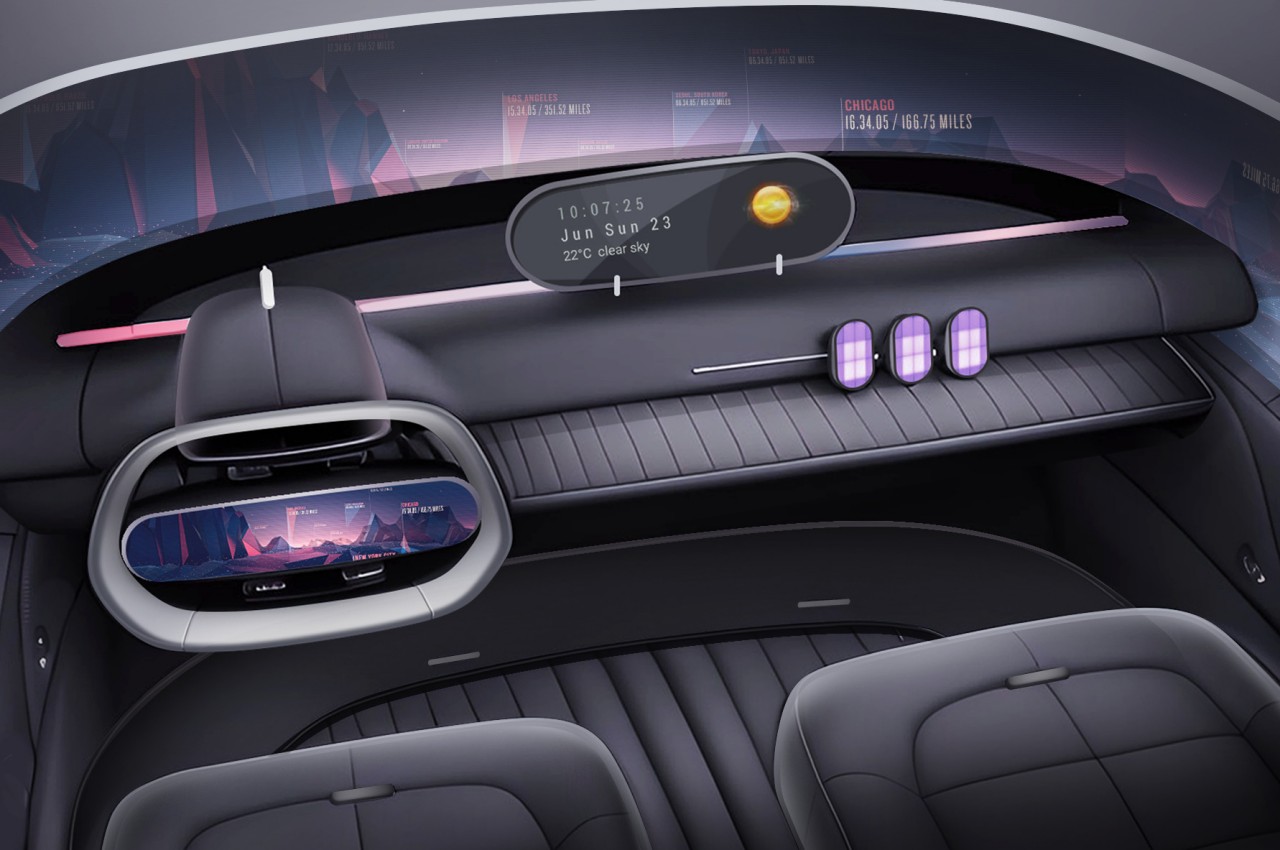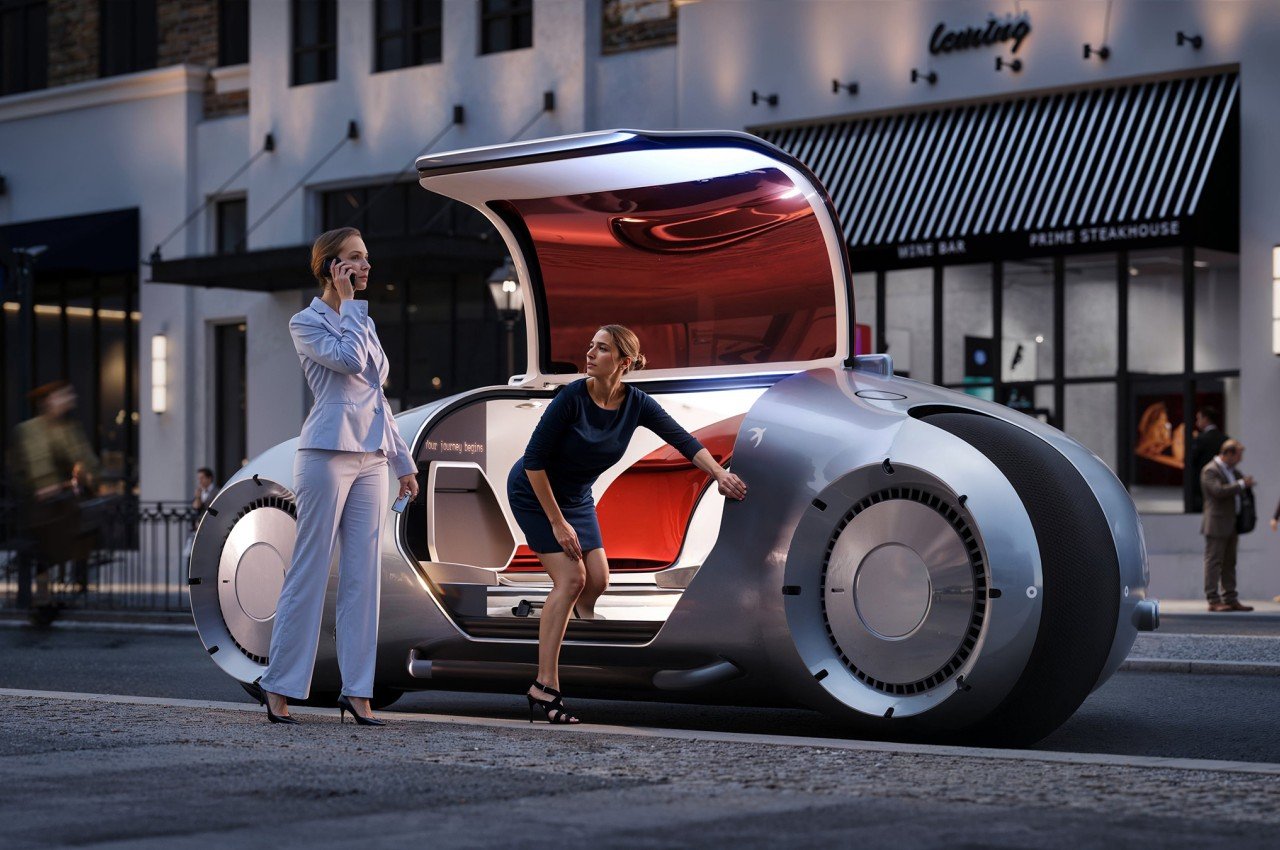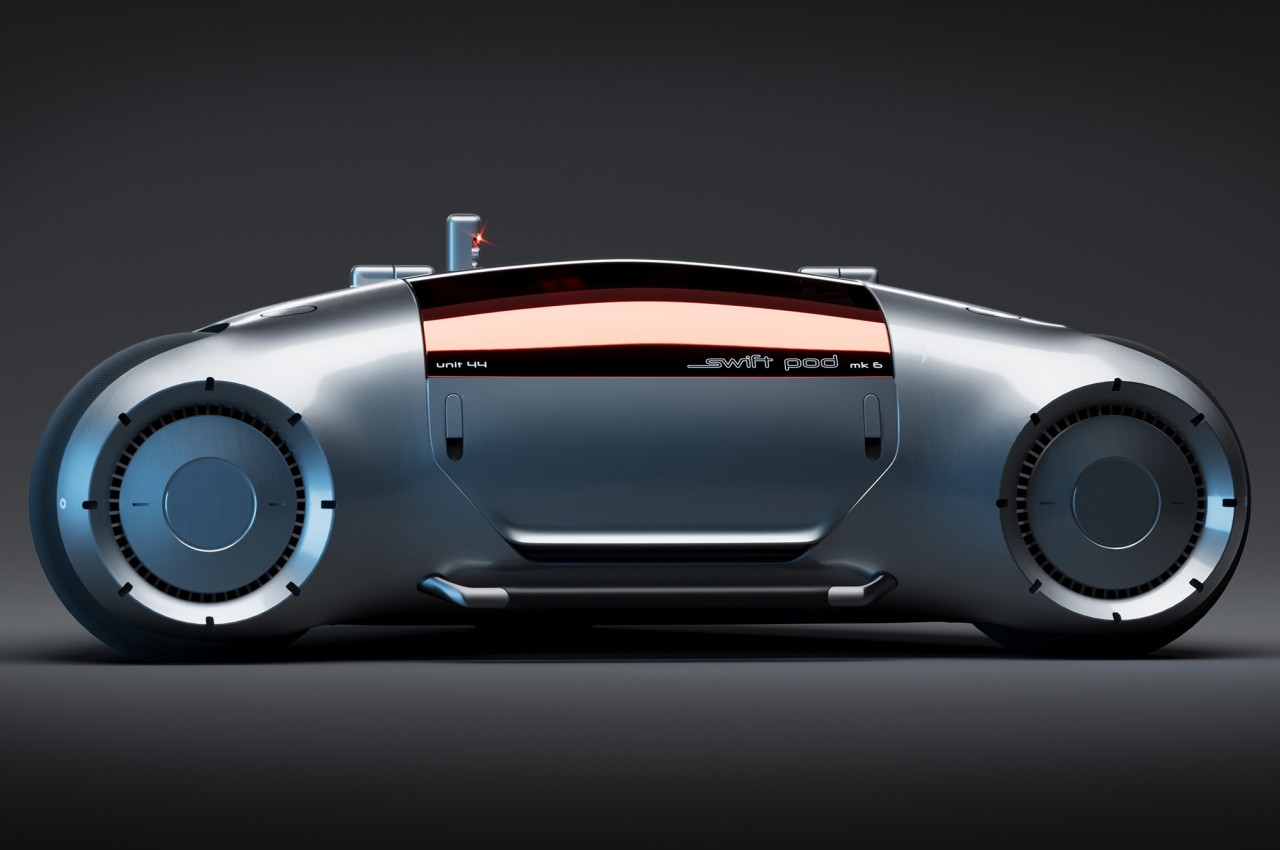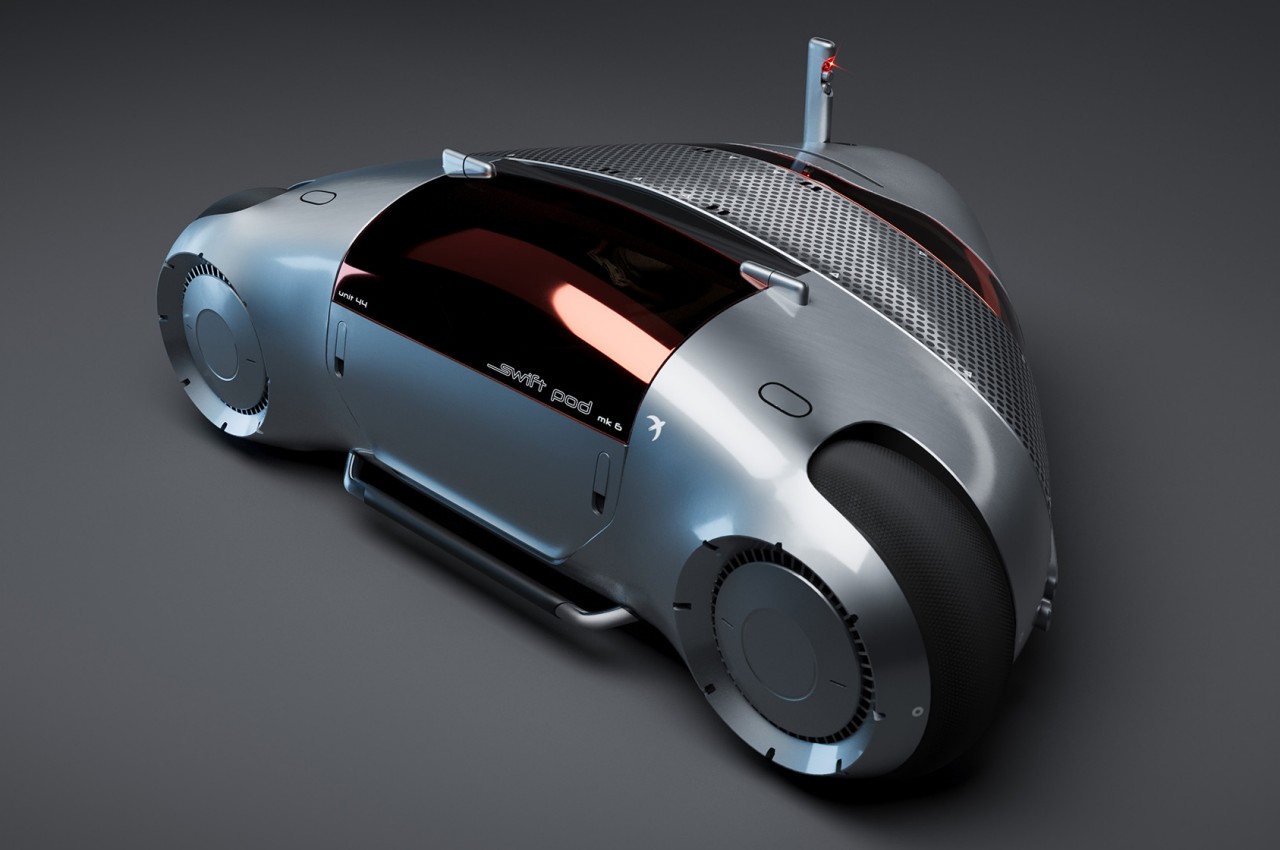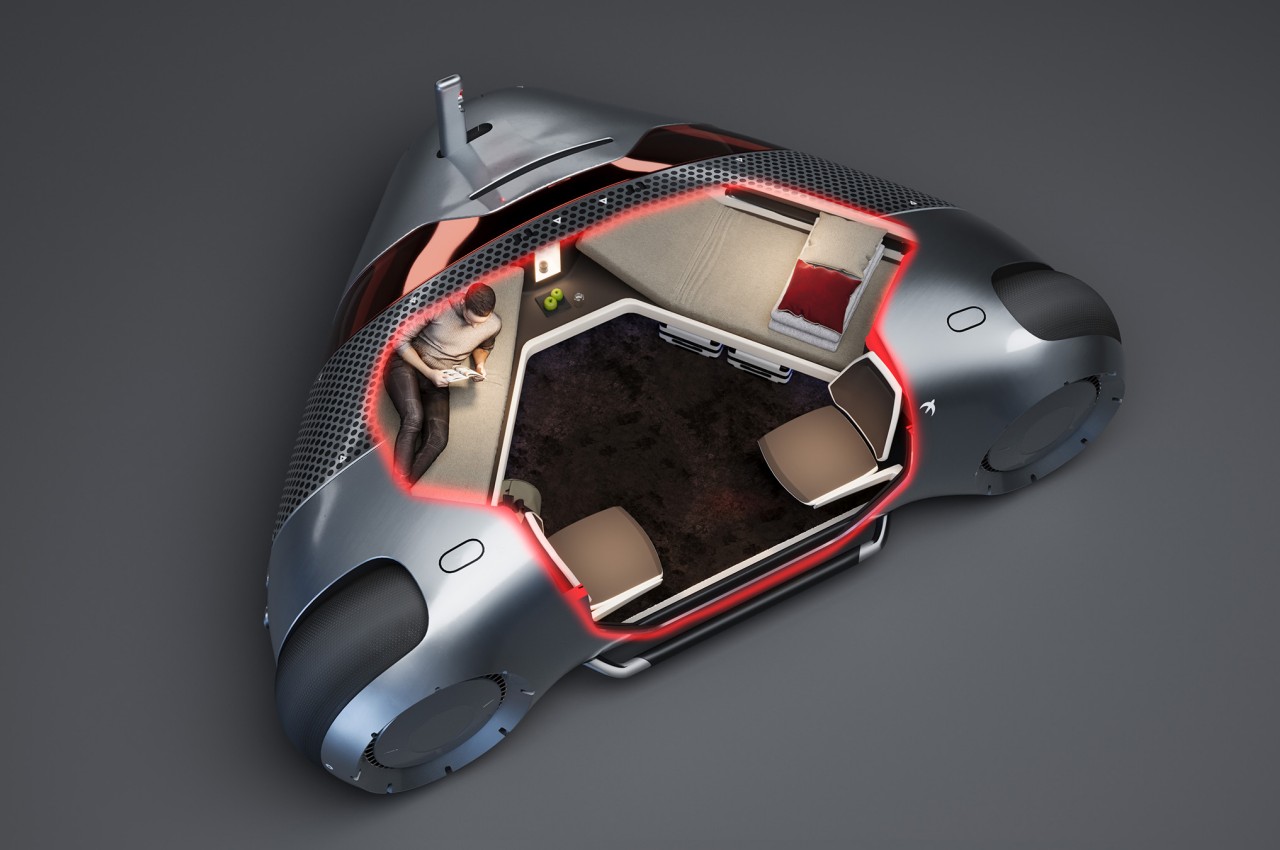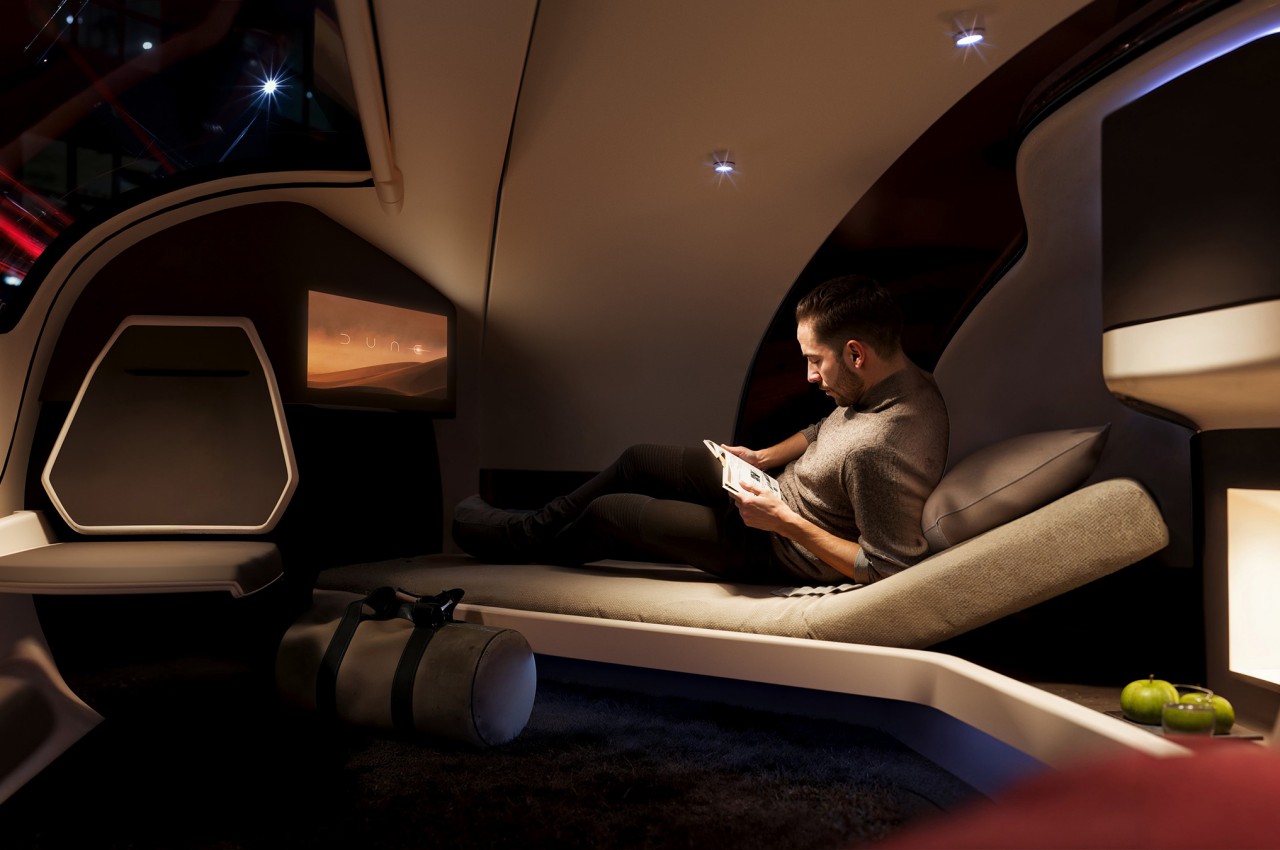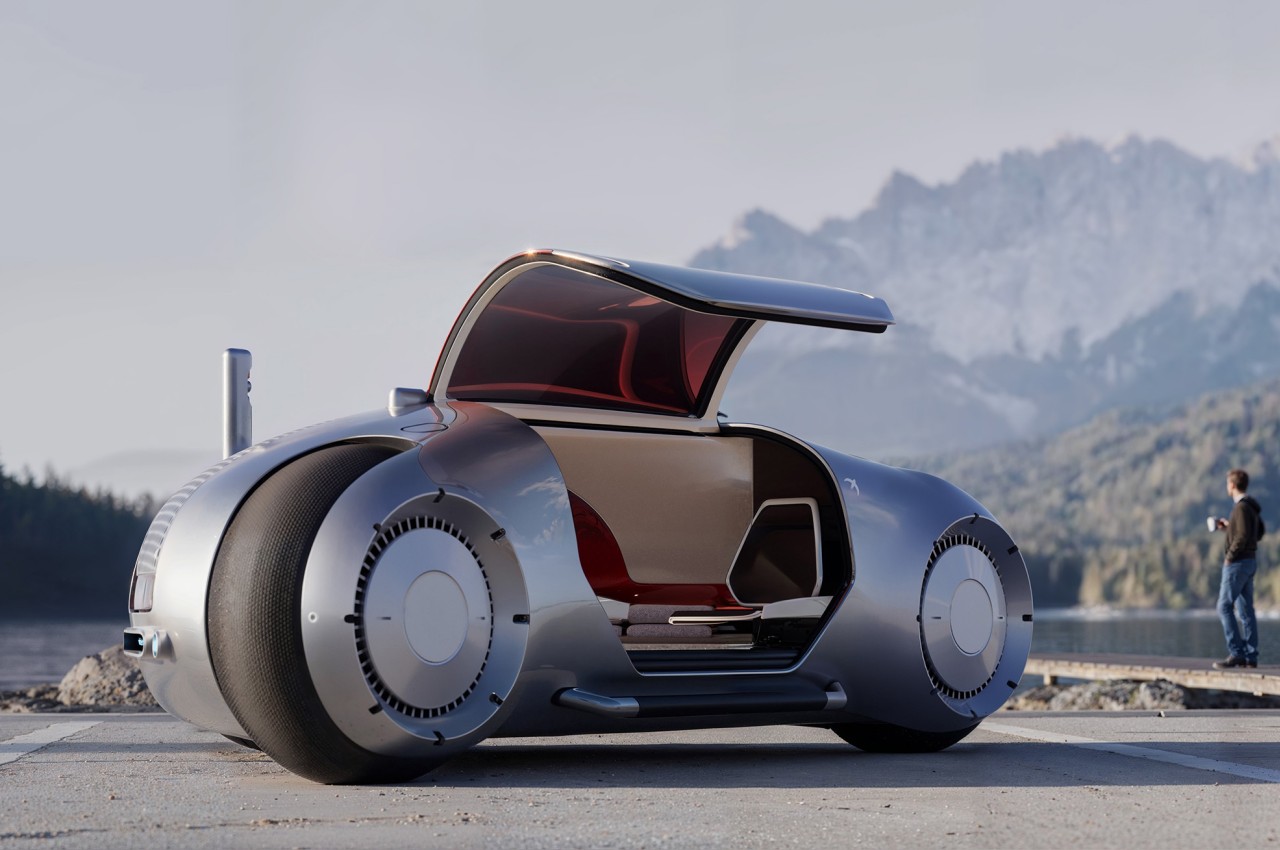
The majority of self-driving car concepts envision a future where family and friends take advantage of the freedom these vehicles offer. Even strangers, however, can also benefit from autonomous vehicles by making mass transit more efficient. Not all commuters, however, are comfortable traveling with strangers, and even self-driving sedans could be a waste of space and energy for these people. If self-driving vehicles are supposed to make traveling more efficient and, therefore, more environment-friendly, then they should also take into account the needs of solo commuters, which is exactly what this concept for a single-person autonomous taxi tries to do.
Designer: Tony Ma



To be fair, not having to worry about driving while interacting with other people in the vehicle is one of the biggest pulls of the concept, but it’s not the most fundamental benefit. What autonomous cars offer is the freedom to do more important things other than almost mindless driving, whether it’s socializing, preparing for your next meeting, or even resting. Spending some alone time is not exactly easy if you’re traveling with others, whether they’re strangers or not, and having a four-passenger car all to yourself every day is a wasteful use of resources.




TAXI for one is a design concept whose name says it all. Instead of a car, it looks more like a mini golf cart split in half to fit only one person inside. And since it’s a self-driving vehicle, that person is the one and only passenger, with no other people to potentially disturb you or make you feel less secure. It’s perfect for people who, for whatever reason, prefer to travel solo and have very few things to carry with them, like going to and from the office.


The key design requirement for such a single-passenger autonomous vehicle would be the compactness of space while still providing comfort and room for storage. The latter goes into a compartment in front of the vehicle rather than at the back like a traditional trunk. This makes loading and unloading easy because the storage is near the vehicle’s door rather than forcing riders to go around first.


In exchange for the more compact form, however, the TAXI for one has very little room for reclining the seat and stretching your legs. As such, it isn’t exactly designed for longer periods of travel and is better suited for inter-city commutes only. That is probably fine for future workers who just want to get to the office and back home without much fuss, fanfare, or dealing with random people.


The post Self-driving taxi for one concept is perfect for solo commuters first appeared on Yanko Design.
